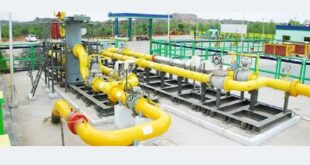- Recently, the Ministry of Finance amended Indian Insurance Companies (Foreign Investment) Rules, 2015 and clarified on the final rules for increased FDI (Foreign Direct Investment) in the Insurance Sector.
- Parliament had passed the Insurance Amendment Bill 2021 to increase the FDI limit in the insurance sector to 74% from 49%.
- The Ministry of Finance has notified ‘Indian Insurance Companies (Foreign Investment) Amendment Rules, 2021’.
Important points:
- For an Indian insurance company having foreign investment – majority of its directors, key management persons, and at least one among the chairperson of its Board, its managing director and its chief executive officer – will be a resident Indian citizen.
- Total foreign investment here would mean the sum of both direct and indirect foreign investment.
- Direct investment by a foreigner will be called Foreign Direct Investment, while investment by an Indian company (which is owned or controlled by foreigners) into another Indian entity is considered as Indirect Foreign Investment.
Significance:
- The increase in foreign ownership to 74% can result in inclusion of global best practices in terms of insurance products going forward. It will also help in bringing down the cost of insurance products in India.
- It is good for Indian Promoters, it will let them keep control of management and board, the additional capital inflow will help them with funds to push for growth.
- It will benefit small insurance players or the ones where the sponsors don’t have the ability to put in more capital and hence it will benefit in strengthening them and increasing competition across the industry.
- It is likely to help local private insurers grow fast and expand their presence across India, which has one of the lowest insurance penetration levels globally.
- Insurance penetration in India is currently at 3.7% of the Gross Domestic Product (GDP) compared to the world average of 6.31%.
- Growth in the life insurance sector has slowed to 11-12% currently from 15-20% until fiscal 2020, as the pandemic pushed customers to save cash instead of spending on stocks or life insurance policies.
- As of 31st March, 2021, there were only 24 life and 34 non-life direct insurers in India, whereas there were 243 life insurance companies (1956) and 107 non-life insurance companies (1973) at the time of nationalisation.
Model Insurance Villages:
- The Insurance Regulatory and Development Authority of India (IRDAI) has mooted the concept of ‘Model Insurance Village (MIV) to boost insurance penetration in rural areas.
- The idea is to offer comprehensive insurance protection to all the major insurable risks that villagers are exposed to and make available covers at affordable or subsidised cost.
Insurance Regulatory and Development Authority of India
- Following the recommendations of the Malhotra Committee report, in 1999, the Insurance Regulatory and Development Authority (IRDA) was constituted as an autonomous body to regulate and develop the insurance industry.
- The IRDA was incorporated as a statutory body in April 2000.
- The key objectives of the IRDA include the promotion of competition so as to enhance customer satisfaction through increased consumer choice and lower premiums while ensuring the financial security of the insurance market.
- It is headquartered in Hyderabad.
Way Forward
- There should be sufficient appetite for investment from long term investors including sovereign wealth funds, global pension funds and insurance firms.
- The sector needs capital and larger participation of the international partner for evolution and availability of global products in India and for better penetration.
SOURCE: THE HINDU,THE ECONOMIC TIMES,MINT
 Chinmaya IAS Academy – Current Affairs Chinmaya IAS Academy – Current Affairs
Chinmaya IAS Academy – Current Affairs Chinmaya IAS Academy – Current Affairs



